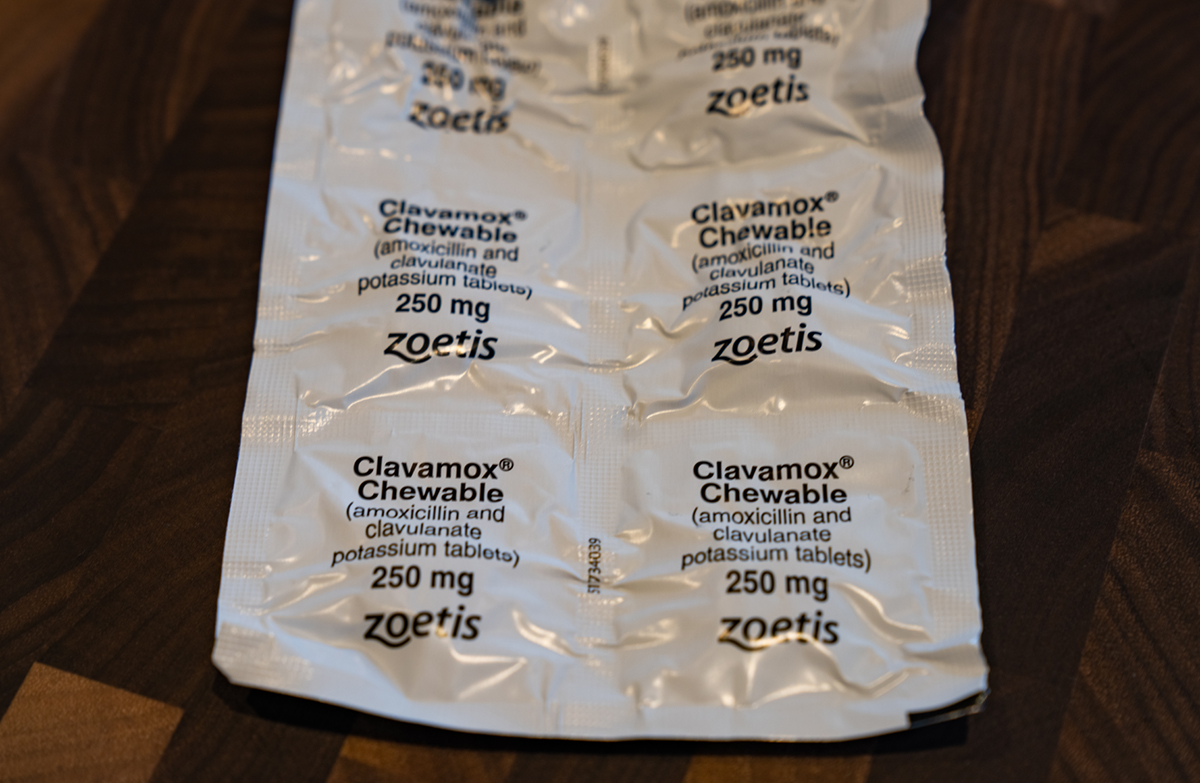Antibiotics in dogs are used to treat different kinds of bacterial infections or the conditions they provoke. The effects of the antibiotics on dogs as well as the course of treatment they entail are not the same as those for humans so it is not recommended to make parallels when taking care of a dog with antibiotics. The veterinarian is the one that should determine the adequate treatment and no one else.
Types of antibiotics and the conditions they treat
Amoxicillin is an antibiotic which is prescribed to treat different kinds of bacterial infections, as well as those infections which attack the teeth, the respiratory system or the bladder. They are not to be mixed up with amoxicillin-clavulanic acid which is a mixture of amoxicillin and the so-called clavulanic acid, and these antibiotics deal with a very particular kind of bacteria and none beside it. This bacteria is called Staphylococci, and it is most commonly associated with bite wounds and skin infections.
Cefpodoxime Proxetil is an antibiotic which can also treat bladder infections, as well as ear infections and dermatological infections. It deals with the accumulations of pus white and yellow fluid which can be located anywhere in the body. They are caused by some sort of an infection as well and called abscesses.
Chloramphenicol deals with infections concerning the nervous system, the prostate or the eye. It is also helpful in infections which can be a result of pneumonia. Its special use is found in the treatment of a condition called hypertrophic osteodystrophy, which affects the muscles and bones of young dogs, causing them to experience fever, weariness, anorexia and lameness.
Doxycycline is a very important antibiotic because it handles the manifestations of Lyme disease, such as abnormalities in the skin, joints, heart and nervous system. Lyme disease is caused by a certain kind of bacteria which is transmitted through ticks. Side from Lyme disease, doxycycline treats urinary tract infections and upper respiratory disorders.
These are just some of the most frequent antibiotics prescribed to fight common infections which affect dogs.
- A total of 14,598 prescriptions for antibiotics were written for dogs between May 20, 2008 and May 20, 2009. Eliminating prescriptions of antibiotics to the same dog within 30 days of a first encounter left 4,521 prescriptions in the database. Fifteen percent (15%) of these were randomly sampled, generating 678 encounters. Adding in all antibiotics prescribed at each encounter left 851 prescriptions in the final dataset. 579 (68%) prescriptions fell into the therapeutic use category and 272 (32%) fell into the non-therapeutic use category. The 579 prescriptions in the therapeutic use category represented 435 unique encounters.
- Antibiotics prescribed most frequently for therapeutic reasons were amoxicillin-clavulanate (143 prescriptions, 24.7%), cefazolin/cephalexin (106 prescriptions, 18.3%) enrofloxacin (97 prescriptions, 16.7%), ampicillin /amoxicillin (83 prescriptions, 14.9%), and doxycycline (65 prescriptions, 11.2%).
- Doxycycline was the antibiotic that had the largest proportion of prescriptions with no documented evidence of infection (58.5%) Cefazolin/cephalexin had 37.8% of prescriptions with no documented evidence of infection, followed by ampicillin/amoxicillin (37.3%), enrofloxacin (34.0%), and amoxicillin-clavulanate (30.8%).
- Excluding doxycycline, which is frequently prescribed for tick-borne infection, and for which no culture is available, amoxicillin-clavulanate (85.5%) and cefazolin/cephalexin (85.7%) contributed the largest percentage of cases for which a culture was not performed. Enrofloxacin contributed the largest percentage of cases for which a culture was performed (54.5%).
Possible Side Effects of Antibiotics
The side effects which sometimes happen to dogs while they are using antibiotics to battle certain conditions are more unpleasant than serious. Some of these are nausea, vomiting, diarrhea, appearance of stains on the teeth, loss of appetite and dehydration. Also, they will undoubtedly withdraw as soon as the illness is gone. However, there are ways to ease the effect of these side effects and they include buying probiotics for the sick dog. That way, the dog would have sufficient levels of good bacteria in the system and therefore fewer chances for the appearance of these side effects.


















Your thoughts on this
Loading...